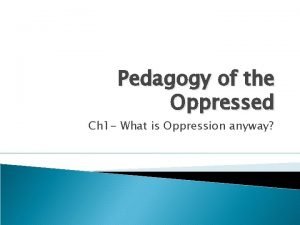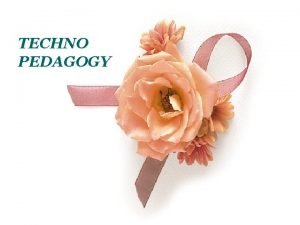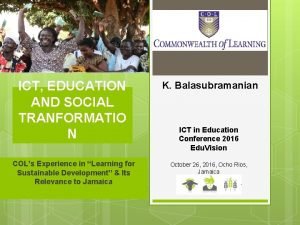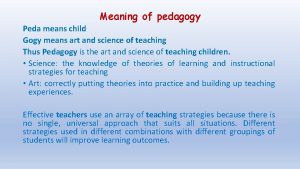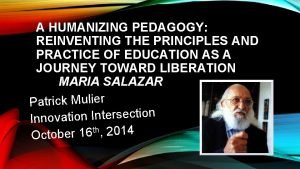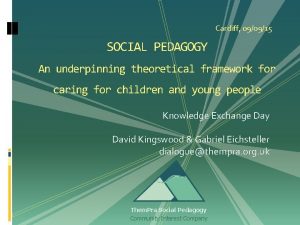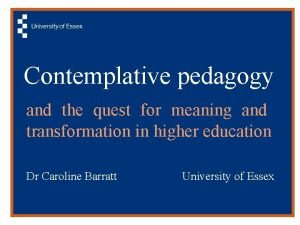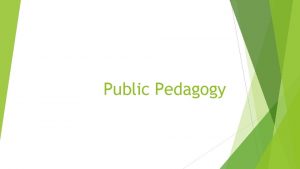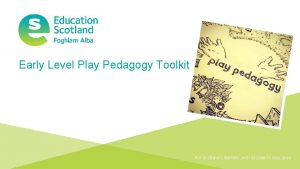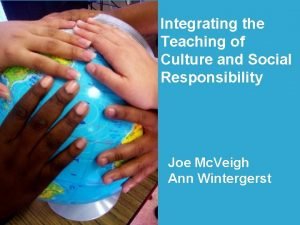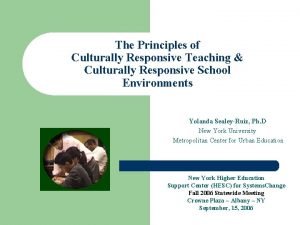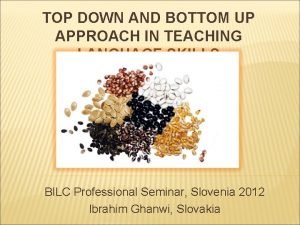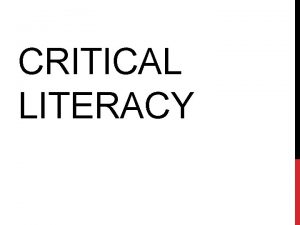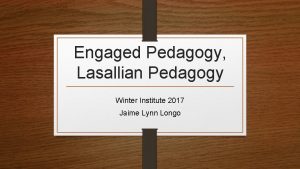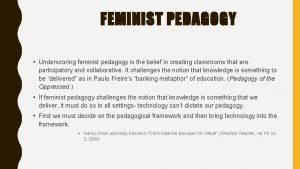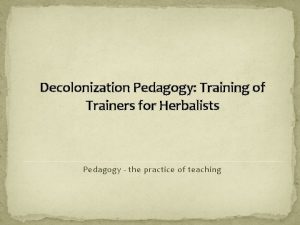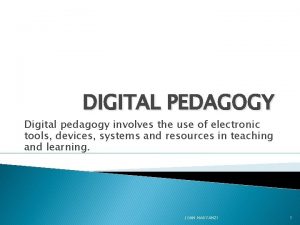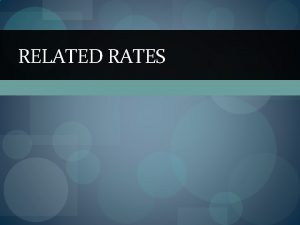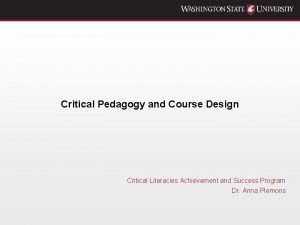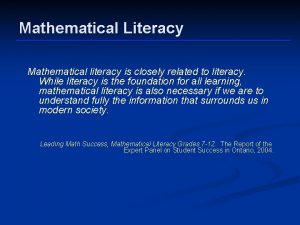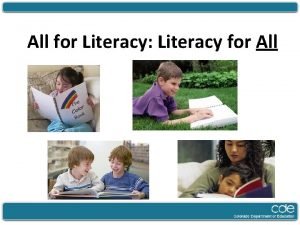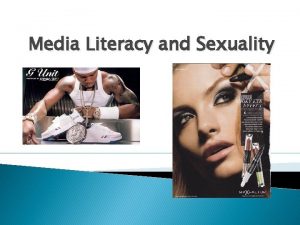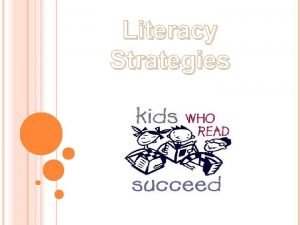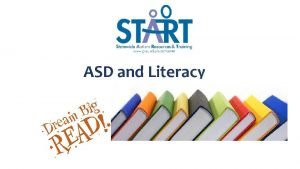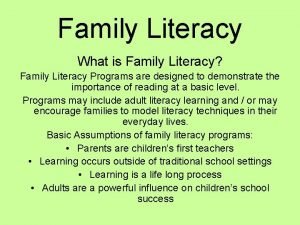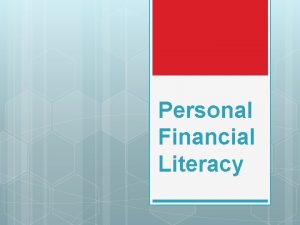CRITICAL LITERACY CRITICAL LITERACY Related to critical pedagogy


















- Slides: 18

CRITICAL LITERACY

CRITICAL LITERACY • Related to critical pedagogy and social justice work of Paulo Freire (Freire, 1998) • The active and often resistant engagement with texts (broadly defined) (Stevens & Bean, 2007) • A process aimed at exploring (and disrupting) issues Dr. Allan Luke Lecture on Critical Literacy http: //blip. tv/presenting/drallanlukeseg 5 -3020955

CRITICAL LITERACY IS: One of four processes readers need (Luke & Freebody, 1990): • Code breaker • Meaning maker • Text user • Text critic (critical literacy) Critical literacy involves deconstruction of texts “with an eye toward elements of historical, social, and political contexts that permeate and foreground any text” (Stevens & Bean, 2007, p. 9).

Gender Roles Then ( circa 1950’s)

AND NOW…

“HISTORIC RACISM? ?

And Now

DISRUPT & CRITIQUE Critical Literacy seeks to: • Disrupt and critique • Provoke multiple interpretations • Critique essentialist, simplistic views of issues, people, and things • For example, class, gender, and ethnic stereotyping • “People in that neighborhood are like that…. ”

CRITICAL LITERACY HABITS OF MIND In any discourse: • • Who has their views represented? Who is privileged? Who is left out or silenced? What social, political, economic, gender, and ethnicity elements are at play? (Stevens & Bean, 2007)

TEXTS ARE SOCIAL CONSTRUCTIONS Texts are never neutral Texts can be: • Deconstructed and • Reconstructed through: • Critical questions and discussion

“ZESTY”? ? ? OR SEXIST? “Once you go Italian you never go back. . ” ~ Kraft Italian Dressing Commercial

OR JUST DISTURBING…

CRITICAL CONSUMPTION

ACTION STEPS Start small: incorporate critical literacy questions into lessons using pop culture Bridge to other content material (e. g. textbooks, articles etc. ) Bring Awareness to positioning and impact of images and messages. Deconstruct and reconstruct texts with your students

WHY THIS MATTERS…

YOUR TURN… For our next class – This time we “deconstructed” images of gender roles and race. Next time we will “reconstruct” these images through critical literacy: • Bring in a text that you feel could be used from a critical literacy perspective for the grade level you would like to teach that reconstructs a negative stereotype.

REFERENCES Bean, T. W. , & Harper, H. J. (in press). Exploring notions of freedom in young adult literature. Journal of Adolescent & Adult Literacy. Cervetti, G. , Damico, J. S. , & Pardeles, M. J. (2001). A tale of differences: Comparing the traditions, perspectives, and educational goals of critical reading and critical literacy. Reading Online (On-line). Available: http: //www. reading. org Foucault, M. (1977). Power/Knowledge: Selected interviews and other writings. New York: Pantheon. Friedman, T. L. (2005). The world is flat: A brief history of the twenty-first century. New York: Farrar, Straus and Giroux. Freire, P. , (1998). Pedagogy of freedom: Ethics, democracy, and civic courage. New York: Rowman & Littlefield. Harper, H. J. , & Bean, T. W. (2006). Fallen angels: Finding adolescents and adolescent literacy (ies) in a project of democratic citizenship. In D. E. Alvermann, K. Hinchman, D. W. Moore, S. Phelps, & D. Waff (Eds. ), Reconceptualizing the literacies in adolescents’ lives (2 nd ed. ), (pp. 147 -160). Mahwah, NJ: Lawrence Erlbaum.

REFERENCES CONT’D Lankshear, C. , & Knobel, M. (2002). Do we have your attention? New literacies, digital technologies, and the education of adolescents. In D. E. Alvermann (Ed. ), Adolescents and literacies in a digital world (pp. 19 -39). New York: Peter Lang. Luke, A. , & Freebody, P. (1999). Further notes on the four resources model. Reading Online (On-line). Available: http: //www. readingonline. org/research/lukefreebody. htm Malloy, R. (2006, April). Itronix Hummer Laptop: The in-your-face status symbol for the ultimate road warrior. Laptop, pp. 146 -147. Martin, T. (1999). Essential Surrealists. London, England: Parragon. Mazda. (2004). ‘ 05 Mazda Miata: Zoom-zoom. Irvine, CA: Mazda North American Operations. Stevens, L. P. , & Bean, T. W. (2007). Critical literacy: Context, research, and practice in the K-12 classroom. Thousand Oaks, CA: SAGE.
 What is skill-related fitness? *
What is skill-related fitness? * Two types of fitness
Two types of fitness Critical semi critical and non critical instruments
Critical semi critical and non critical instruments Spaulding classification system
Spaulding classification system River
River Techno pedagogy
Techno pedagogy Conclusion of ict in education
Conclusion of ict in education Epistemology and pedagogy
Epistemology and pedagogy Gogy meaning
Gogy meaning Learner centered pedagogy
Learner centered pedagogy Humanizing pedagogy
Humanizing pedagogy Social pedagogy
Social pedagogy Contemplative pedagogy definition
Contemplative pedagogy definition Public pedagogy definition
Public pedagogy definition Education scotland play pedagogy toolkit
Education scotland play pedagogy toolkit Example of equity pedagogy
Example of equity pedagogy Pedagogy meaning
Pedagogy meaning Diamond model social pedagogy
Diamond model social pedagogy Top down reading
Top down reading




